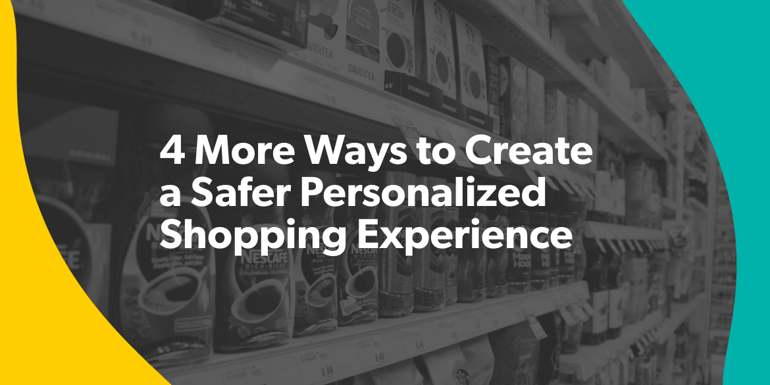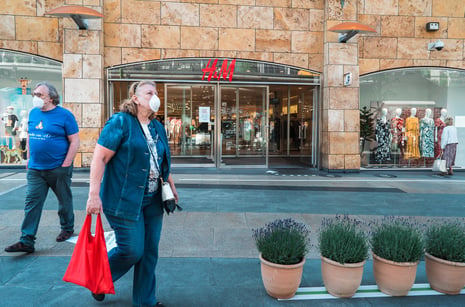The COVID pandemic took its toll on all types of businesses. Even big brands had to face a lot of challenges in recent times. The retailers, in particular, bore the brunt of the devastating economic slowdown. The speed with which the virus is spreading is taking a lot of enterprises by surprise.
But such times of great crisis are also times of fine opportunities. The retailers have to reorganize their strategy for the future. They cannot afford to be complacent as the consumer market has become volatile. These enterprises have to focus on enhanced customer experiences at any cost.
In part one, we discussed how retailers can make customers a priority, provide engaging content with QR codes, and offer a more personalized experience with the use of technology. In part two, I'll share with you four additional key strategies to improve the overall quality of retail services. Follow along below:
Bridge the online-offline gap
Traditionally, retail business meant brick-and-mortar shops. But now customers can sit at home on the sofa and buy online. After COVID, the demand for e-commerce and mobile-based sales has shot up. And this market trend is expected to continue due to its simplicity, convenience, and reliability.
For example, you can start a BOPIS or buy online, pick up in-store option. You can also facilitate curbside pickups to make the customer feel safer. And the technological tools to ensure such services are already there in the form of GPS and email alerts.
Send regular email messages to the customers and highlight the flexible options. Please encourage them to shop online at a convenient time. Also, emphasize the merits of in-store experiences to stay competitive. Remember, customers at the store can feel, touch, and smell the relevant products.
Bridging the digital and physical store gap is very important. Due to COVID, customers have become more discerning. You have to provide them diverse choices and market the brand with enthusiasm. Or the rival companies will march ahead with innovative tools and viable strategies.
Strengthen customer relationships
Unless you are a monopoly, you need to have a good relationship with your customers. There will always be a competitor who would offer the same product like yours with a little diversity. If you do not want your customers to jump to your competitors, it is essential to improve your customer relationship.
You can attract customers by creating a positive ambiance at the store. Alternatively, online engagement can get boosted with tech-intensive interactions. Always stay in touch with the consumers and manage their long-term journey with your brand. Some brands use dynamic QR codes to offer new content from time-to-time. At the same time, some prefer traditional methods of social advertisements and content marketing strategies.
Set-up social media accounts for marketing and customer support. Resolve problems and complaints quickly and proactively seek new buyers. Deliver higher value for money, and focus on consistent interactions. Respect the customers, take responsibility, and leave a strong brand impression.
Emphasize safe shopping
Post-COVID, customers are also apprehensive about health. They worry about cleanliness and product safety. Retail companies have to allay such fears by delivering reliable products with ease. They can promote online shopping with door-step deliveries to enhance the buyer's safety. They can also offer speed deliveries during the festival season to make the customers happy.
Create a dedicated and secure space for concerned customers. Set high standards of efficiency and do not compromise on health guidelines. Empower your marketing and sales personnel to ensure superior safety. Make sure the customers' preferences get addressed on time without any errors.
The next step is a contactless business model. You can use QR codes and augmented reality solutions to offer contactless payment options, information sharing, and more. For example, Tesco started a virtual store in South Korea, where customers can purchase products by scanning the display's QR codes. Thus, your customers need not touch anything while shopping. You need not alter your entire business outlook for a contactless experience. However, you can adapt QR codes in your marketing, touchless menus, information sharing, and more.
Improve accessibility
Finally, brand accessibility in the digital age is mandatory. Due to COVID, the demand for products is higher. Adopt a customer-friendly delivery system and follow the best business practices. Make the brand easily accessible, and connect with the buyers. Improve customer support quality, and give the consumers their money's worth. If you strive hard to offer your service when your competitors cannot keep it up, you can easily attract lifetime loyal customers.
QR code is not the only solution to ease your retail business during this testing time. However, if you are looking for a cost-effective solution to keep up with the trend, it is time to make a QR code for your business.


.png?width=487&name=Personalized%20Shopping%20Experience%20Post-COVID_2%20(1).png)




